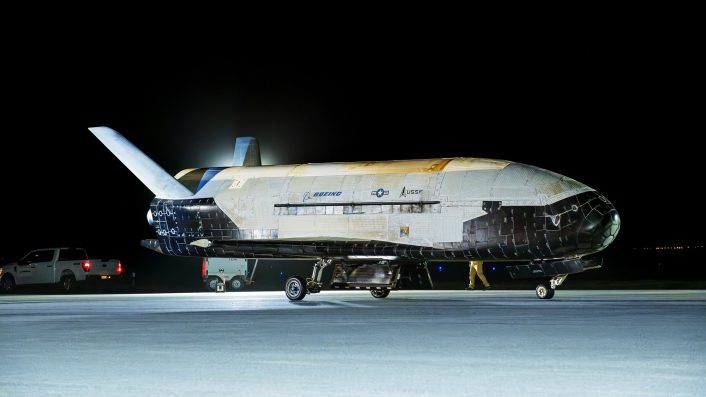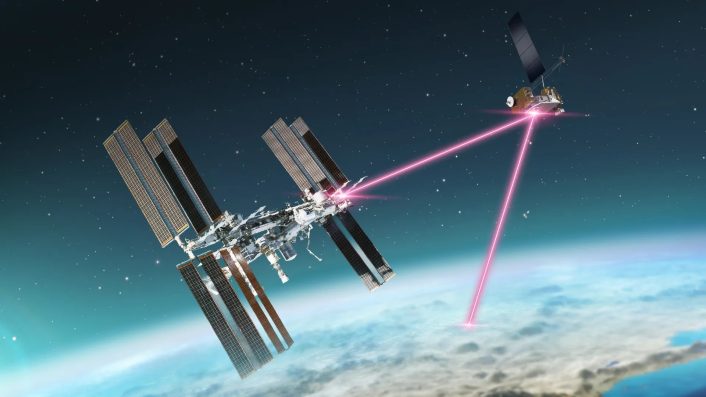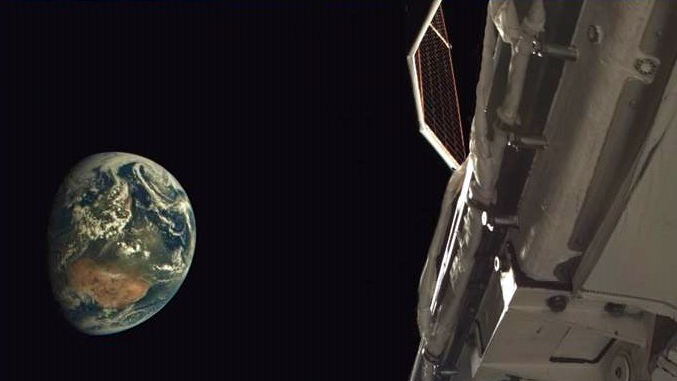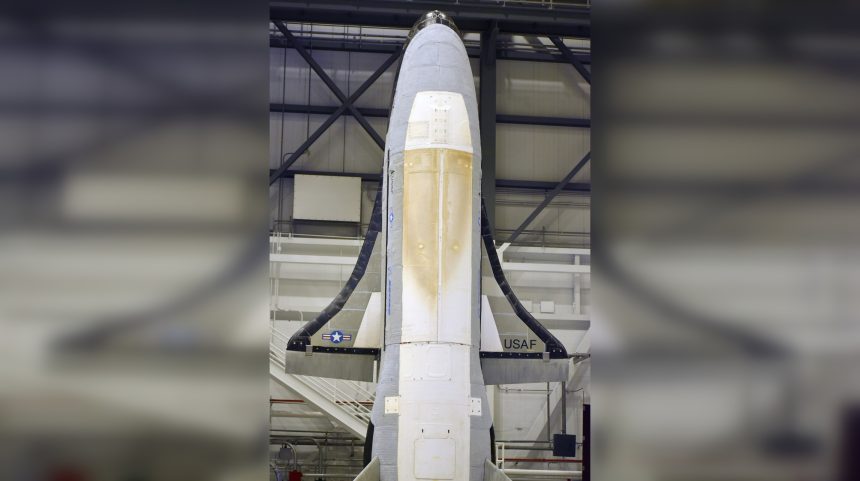The U.S. Space Force will launch the X-37B Orbital Test Vehicle on Aug. 21, 2025, from Kennedy Space Center, Florida.
The U.S. Space Force announced that it will launch the eighth mission of the X-37B Orbital Test Vehicle (OTV-8) on Aug. 21, 2025, from Kennedy Space Center, Florida. The mission will be conducted in partnership with the Department of the Air Force Rapid Capabilities Office (DAF RCO), as well as the Air Force Research Lab (AFRL) and the Defense Innovation Unit (DIU).
The X-37B spaceplane will launch atop a SpaceX Falcon 9 rocket, designated USSF-36. The payload comprises a number of operational demonstrations and experiments for next-generation technologies, including laser communications and the highest performing quantum inertial sensor ever tested in space, says the service.
The spaceplane made by Boeing returned from its latest mission, the seventh since the first flight in 2010, on Mar. 7, 2025, after 434 days in orbit. The OTV-7 mission, designated USSF-52, was the fourth flight for the second X-37B, launched atop a Falcon Heavy in a Highly Elliptical Orbit.
The Space Force’s X-37 is heading back to space for new tests and experiments. Launch is targeted for August 21st from the Kennedy Space Center. Wondering what it’ll be up to? We’re excited to share two key tests. (1/4) pic.twitter.com/8Q9Oy0PAN2
— General Chance Saltzman (@SpaceForceCSO) July 28, 2025
“These experiments come as part of a broader push across the U.S. Space Force to uphold the safety and security of the space domain by enhancing the resilience and flexibility of U.S. orbital systems,” explained the Space Force in the announcement of the new mission.
The laser communications and quantum inertial sensor are only two of the key tests which will be conducted during the OTV-8 mission. The others have not been disclosed yet.
“This mission is about more than innovation,” said Chief of Space Operations Gen. Chance Saltzman on X. “It’s about making our Joint Force more connected, more resilient, and ready to operate in the face of any challenge. That’s how America’s Space Force secures our Nation’s interests in, from, and to space.”

Laser communications
During the OTV-8 mission, the X-37B will be used to conduct laser communications demonstrations involving proliferated commercial satellite networks in Low Earth Orbit. Low Earth Orbit (LEO) refers to Earth orbits below 1,200 miles (2,000 km) above the planet’s surface.
The Space Force did not disclose which commercial satellite network will be used, however among the likely candidates are SpaceX’s Starlink and Starshield satellites, the latter being the military variant of the former. In fact, these Starlink satellites are equipped for laser communications, specifically inter-satellite laser communications terminals, and already work with the U.S. government.
Laser communications provide significant advantages as they can be used to transfer greater volumes of data securely, quickly and with reduced power requirements. However, they have some drawbacks due to the higher speeds of the satellites in LEO, which allow only small windows of time to point the laser, establish the link and relay the data.
“Laser communications are integral to the future of space communications as the shorter wavelength of infrared light increases the amount of data that can be sent with each transmission,” explained the Space Force. “Additionally, they are more secure than traditional radio frequency transmissions owing to the more targeted nature of laser beams. The use of proliferated relay networks enhances the resilience of U.S. space architectures by ensuring that they contain no single point of failure.”
“OTV-8’s laser communications demonstration will mark an important step in the U.S. Space Force’s ability to leverage proliferated space networks as part of a diversified and redundant space architectures,” stated Gen. Saltzman commenting on the significance of this demonstration. “In so doing, it will strengthen the resilience, reliability, adaptability and data transport speeds of our satellite communications architecture.”

Quantum inertial sensor
The second key test of OTV-8 will be the demonstration of what the Space Force defined the world’s highest performing quantum inertial sensor ever used in space. This demonstration will inform accurate unaided navigation in space by detecting rotation and acceleration of atoms without reliance on satellite networks like traditional GPS, explained the service.
This is especially significant as recently emerged reports, published by Air and Space Forces Magazine, mention that “jamming of GPS signals around Ukraine has become so severe it is even affecting satellites up to 1,200 miles above the Earth’s surface.” The jamming of GPS signals has now become a common occurrence in conflict areas, affecting both military and civilian aviation, as well as maritime traffic, however the emergence of these effects in LEO poses new problems.
“This technology is useful for navigation in GPS-denied environments and consequently will enhance the navigational resilience of U.S. spacecraft in the face of current and emerging threats,” explained the Space Force describing the test of the new sensor. “As quantum inertial sensors would be useful for navigation in cislunar space, they additionally promise to push the technological frontiers of long-distance space travel and exploration.”
Quantum sensors have potential applications for new Positioning, Navigation, and Timing (PNT) capabilities as alternative to GPS. These sensors, leveraging the stable properties of atoms and subatomic particles used for atomic accelerometers or gyroscopes, would be invulnerable to GPS jamming.
“OTV 8’s quantum inertial sensor demonstration is a welcome step forward for operational resilience in space,” said Col. Ramsey Horn, Space Delta 9 commander. “Whether navigating beyond Earth based orbits in cislunar space or operating in GPS-denied environments, quantum inertial sensing allows for robust navigation capabilities when GPS navigation is not possible.”
“Ultimately, this technology contributes significantly to our thrust within the Fifth Space Operations Squadron and across the Space Force guaranteeing movement and maneuverability even in GPS-denied environments,” added the Colonel. The Fifth Space Operations Squadron is the unit within USSF Delta 9 which conducts day-to-day on-orbit operations of the X-37B in partnership with the Air Force Rapid Capabilities Office.

X-37B
The X-37B Orbital Test Vehicle is the U.S. Space Force’s secretive, unmanned spaceplane, designed to test new technologies and push the boundaries of reusable spacecraft. Originally developed by NASA and later handed over to the military, the X-37B has spent years quietly conducting classified missions, fueling speculation about its real purpose.
At its core, the X-37B is about two things: advancing reusable spacecraft tech and conducting experiments that can be brought back to Earth for analysis. The spaceplane is launched vertically on a rocket, spends months (or years) in orbit, and then lands like a conventional aircraft. Over the years, it has tested everything from advanced thermal protection systems to autonomous flight controls and even potential new propulsion methods.
The program dates back to 1999, when the Air Force began working with NASA on what was then just the X-37. In 2004, the project was transferred to DARPA, which completed flight tests with a smaller, scaled-down version called the X-40A. NASA’s original vision for an X-37 Orbital Vehicle never materialized, but its design served as the foundation for what eventually became the Air Force’s X-37B.









